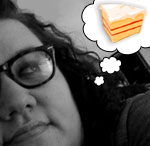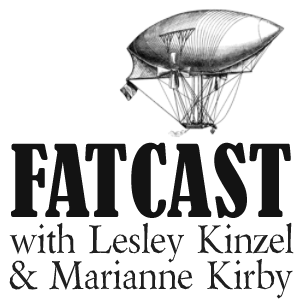Fatty Fatty Two By Four, Couldn’t Fit Through the Airlock Door
By Guest Writer | June 30, 2008
Despite what I thought about giving my hard earned cash to Disney/Pixar after reading stitchtowhere’s brilliant post about fatphobia in Wall-E, I ended up seeing it tonight. I had a moment of weakness at the theatre (oh, how I wanted to have a cold drink and bask in a dark air-conditioned room on the first hot weekend of the year), and since it was Wall-E or the obnoxious Adam Sandler stereotype-fest (which my cinema companion had already seen and declared truly sucktastic), I went with teh cuuute robots. At the very least, I could blog about it, right?
Before we start, I need to declare that I am biased in favour of robot romance. I read Diesel Sweeties regularly, scoff at anyone who thinks that C3PO and R2D2 should be a couple (3PO is too uptight for R2), and have a soft spot for HAL singing “Daisy, Daisy.” Understandably, I was thrilled to see the amazingly expressive (nearly) wordless interactions between Wall-E and his love, EVE. Until the humans enter the picture, the film contains marvelous details of wonder, including one grand one of Wall-E touching rocks in the rings of what must be Neptune or Uranus. I was less impressed when the humans show up. Wall-E uses a combination of live actors (in prerecorded messages relayed to the humans of the future) and animated humans. We’re supposed to surmise that 700 years of consumerism and a sedentary lifestyle in space (which includes liquified foods like pizza and cupcakes) will morph average-looking people into balloon-shaped, infantile caricatures. Thankfully, they didn’t go with the Jabba-the-Hutt model I had read about several times on line, but there is literally no variation in body type among the humans, just one round body with legs that appear an inch long in contrast to the torso. A video watched by the captain tells us that all of these people have reduced bone density, and there were chuckles from the audience, presumably because of the joke that fat people say they are “big boned.”
Overall, the message I got wasn’t that fatties cause global disaster, it was that unless you want to be stuck on your squishy, rounded back like a turtle (a repeated sight gag) you need to care about the environment and find a sense of wonder in your surroundings. I can get on board with the last part, but object to the overt planting of the fear of fatness in kids. I don’t even want to imagine being a chubby kid and seeing Wall-E.
The humans aren’t all bad. Despite being depicted as physically horrible, they are good-natured (without falling into jolly fatty territory), sympathetic, and by the end of the movie, inquisitive. Though we see many evil robots, the only evil human was played by a live actor. What burns me is they could have easily made the same point about humanity without using fat as a shorthand for grotesquery and laziness. I can’t say I expected anything better from Disney, though, with their history of using women and people of colour as quick symbols.
If you go see one cartoon movie with fat jokes in it this summer, make it Kung Fu Panda. At least the jokes are made by characters who are portrayed as wanting to hurt the panda’s feelings, not built in as part of the story. As a bonus, the panda has the confidence to follow his dream despite the insults.
Comments are closed.





 Two Whole Cakes is a blog written by
Two Whole Cakes is a blog written by 

